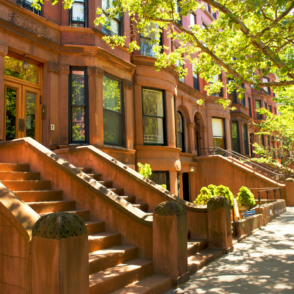2018 is just around the corner. Whether you are a first-time homebuyer, a seasoned buyer or a real estate investor, looking ahead to what 2018 has in store will help you to determine how, when and where you purchase real estate in the coming year. To that end, here is a look at some of the real estate predictions for 2018.
Housing Prices
With 12 percent fewer homes available on the nationwide housing market, most predict that inventory shortages will continue to push up home prices. 2017 was full of record-breaking home price growth and this type of growth is expected to continue into next year. While the “normal” annual appreciation is around 3 percent, experts are predicting a 4.1 percent climb in 2018. Currently, 51 percent of for-sale properties are already in the top one-third of home values, creating additional obstacles for first-time homebuyers who are already struggling to save for a down payment.
On the other hand, while prices are expected to increase in 2018, many economist predict that the rate of increase will slow down in 2018. Freddie Mac, for example, has forecast that prices will increase by 4.9 percent. This is significantly lower than the 6.3 percent increase experienced so far in 2017.
Home Sales
While homeowners selling their homes would help to alleviate low inventory issues, some experts predict homeowners will choose to stay and remodel the homes they already have in order to meet their needs rather than move. Nonetheless, most forecasts predict that total home sales will increase about 2 percent from 2017 to 2018.
New Starts
Economists have made it clear that the key to bringing down home prices is to increase the number of residential housing starts. In 2018, most experts predict that builders will begin to place a greater emphasis on entry-level homes. This will be a shift from the recent past, with housing starts being well below the 50-year average of 1.2 million. In fact, between the 1990s and 2000s, about 80 percent of new construction were single-family units. This figure is now at only around 65 percent. These new homes are expected to be the main force behind real estate sales in 2018, with 1.33 million housing starts predicted for 2019. This is up significantly from the 1.22 million in 2017.
Regardless of the percent of the overall market, these new housing starts are expected to feature designs that appeal to both Millennials and baby boomers, such as wide hallways to accommodate both strollers for young families and wheelchairs for aging boomers. They are also likely to be built using framework that will make it easy to add additional elements later.
Housing Types
Millennials have long been attracted to urban centers and the vast amount of entertainment and shopping options they have to offer. With many relying on their parents for financial support, however, many experts predict those between the ages of 25 and 34 will start to move the suburbs in search of more affordable housing options. This means there is likely to be a greater demand for suburban housing than urban apartments and condos.


